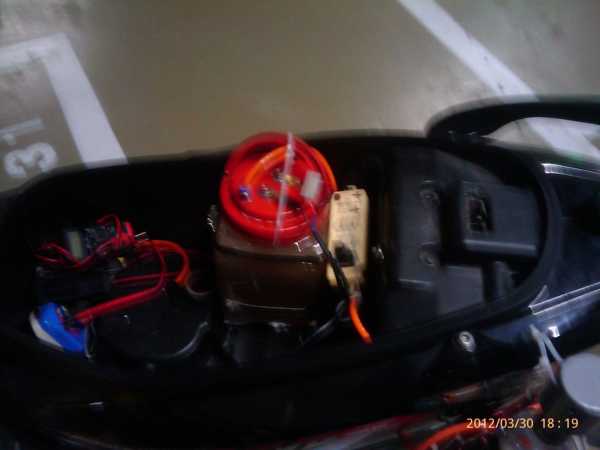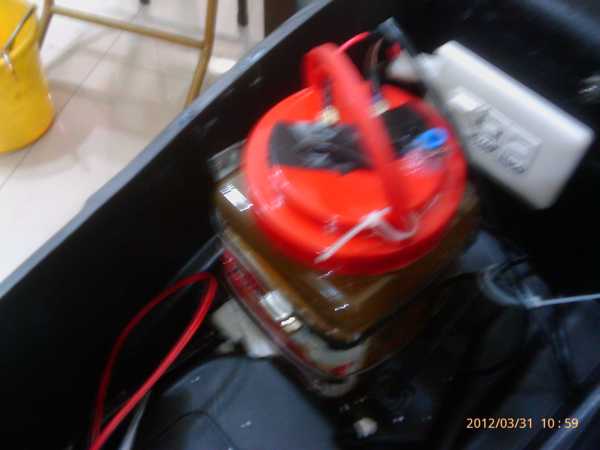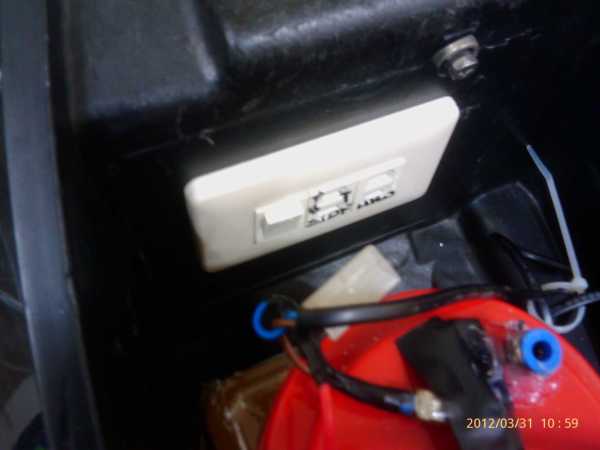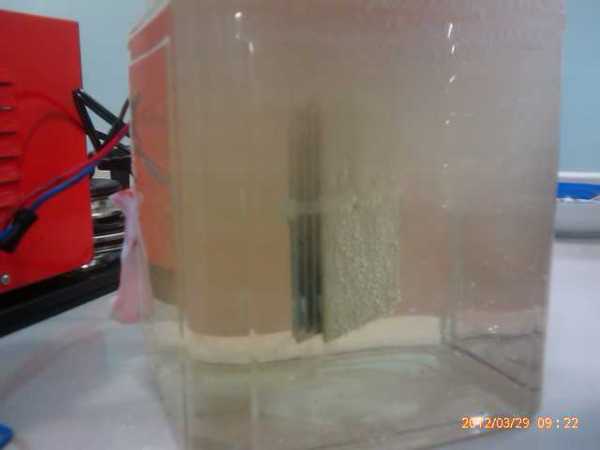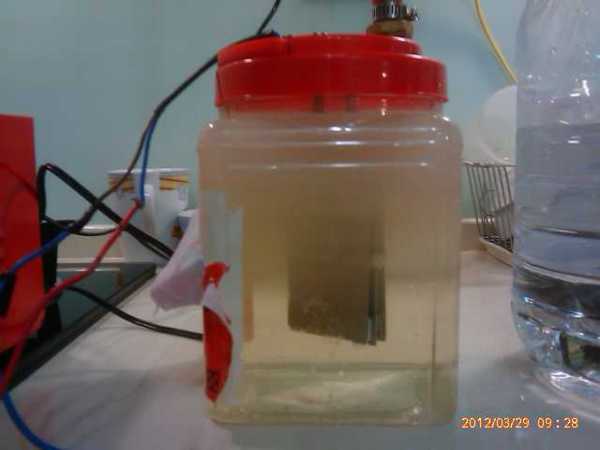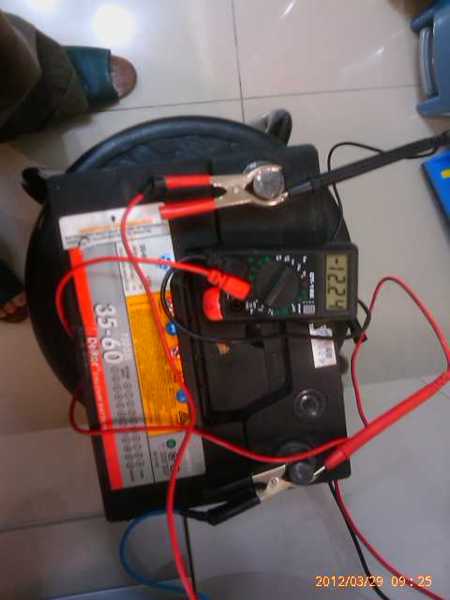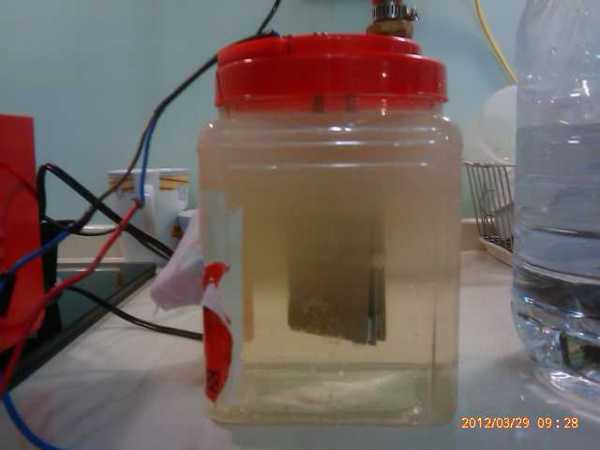

 字體:小 中 大
字體:小 中 大 |
|
|
|
| 2012/03/31 18:34:46瀏覽3349|回應0|推薦0 | |
氣車氫氣(hhO)省油裝置!可省柴油或氣油40%........... 1 quart/1 公升水也許持續幾個月駕駛。那是因為這個小設備 強迫各加侖水擴展入碩大比例: 1833 加侖可燃燒的氣體!!!
Water is LifeWater is life, and so much more. So, why all of the excitment about common H2O? Water is a glue that bonds all of life on earth together. Without it, we would not exist. With it, not only do we exist, but we have one powerful tool to aid us with our growing energy problem. How so you may ask? Water can be broken down to produce hydrogen, a clean energy carrier. Hydrogen generated from water is abundant, non-polluting, and is eternal in nature. Unlike compressed hydrogen or other more common fuel sources, water can be stored safely, without risk of fire or explosion. There is more hydrogen in a liter of water than there is in a liter of liquid hydrogen! Through the application of the Bob Boyce® catalytic technology, Hydroxy Gas™ can be generated, on demand, from water. If we use this technology to split water efficiently, and we use the generated Hydroxy Gas™ wisely, the source water is never lost. After using the Hydroxy Gas™ to perform work for us, we release the byproduct into nature as clean water vapor, where it will be returned to us once more as liquid water by the earths water cycle. Hard to beat! Will the ever-increasing greed of big government, big oil, and big business, ever be satisfied enough that they can stop destroying this planet at everyone elses expense? I really doubt it. There is energy aplenty in the wind, the sun, in flowing rivers and waterfalls... Even in a cup of water, latent there, just waiting for the adventurous... Brown's Gas( HHO) HHO is also commonly known as Brown's Gas and comprises (by volume) two parts Hydrogen gas and one part Oxygen gas. It has the same Oxygen and Hydrogen elements and in the same proportions as in water - or in water vapor - therefore Brown's gas is sometimes mistaken to be "water vapor" or something similar. What William Rhodes and Professor Yull Brown discovered was, that HHO is NOT water vapor. It's very different. They discovered that water has more than the usual three states, namely solid (which we call "ice"), liquid (we call it "water") and gas (we call it "water vapor"). It has a forth state called Brown's Gas (HHO). Brown's Gas is NOT Oxygen plus Hydrogen, like those gases that you might get from a factory supply. Ordinary Hydrogen and Oxygen gas, when purchased commercially, or when produced by Electrolyzers that separate Hydrogen from Oxygen and LEAVE THEM SEPARATED (not Water4Gas), these gas mixture comes in the form of O2 and H2. That is, the molecules of both gases form molecules of TWO ATOMS EACH. What we call "diatomic" structure, unlike "mono-atomic" or monatomic in which we have single, NONPAIRED atoms. This is the STABLE STATE for these gases. When individual atoms are separate as molecules (charged ions) of one atom each, they are not stable - they want to pair up. Now let's try to burn these atom pairs, O2 and H2. It IS a combustible gas mixture, however the problem is that before they can react together (the burning process) to make H2O, we must first break apart each atom pair into separate H and O atoms. Now here's the real problem: the energy we need to do break them apart makes the process non efficient. In other words it can be done, but it does not pay for itself. What makes Brown's gas unique - and highly valuable for our energy needs - is the fact that the Hydrogen and Oxygen have not formed into O2 and H2 molecules. They are in their monatomic state - a single atom per molecule! In this state, which is an UNSTABLE STATE, we will get 3.8 times more energy when we burn the Hydrogen with the Oxygen. The reasons: a) We have the monatomic state which is perfect for the burning process, and b) We have the perfect balance of ingredients - just the right amount of Oxygen necessary for the Hydrogen to fully and effectively burn. It's so perfect that it feels like winning the lottery! Below is further documentation discussing Brown's Gas gathered from International Patent App. WO 2005/049051 A1 and U.S. Patent Application US2007/0104797 A1, both referring back to the Brown's Gas books published by Eagle Research Brown's Gas Theory Brown's gas is a mixed gas of hydrogen and oxygen (2:1, by volume) created by electrolysis of water. It is thought that Brown's gas also contains considerable water vapor. Generally, electrolysis of water produces a hydrogen gas at cathode and an oxygen gas at anode. These gases are captured at the same time without being separated, and the captured mixed gas is generally known as "Brown's gas." Brown's gas has several characteristic properties, unlike general gases. The most noticeable property of Brown's gas is implosion upon ignition. For this reason, Brown's gas is known to have ultra- high temperature to an extent that can sublimate (change directly from solid to vapor without first melting) tungsten – a metal that has the highest melting point of all metals! According to the classic theory (the first theory), Brown's gas is a simple mixed gas of hydrogen and oxygen generated by electrolysis of water, which cannot explain the special characteristics of Brown's gas. Accordingly, new theories about the entity of Brown's gas have been recently introduced. Experimental results acquired to date show that a mixture of oxygen and hydrogen generated by a Brown's gas generator has remarkably larger reactivity than an equal amount of another mixture of oxygen and hydrogen. The second theory about Brown's gas is that Brown's gas is a mixture of diatomic (each molecule made up of two atoms) hydrogen/oxygen and monatomic (element consisting of a single atom) hydrogen/oxygen. The recently published third theory is that electrolysis of water produces third gas bubbles between a cathode and an anode, in addition to a molecular hydrogen gas at the cathode and a molecular oxygen gas at the anode. According to this third theory, it is thought that Brown's gas is a special “water gas” in which the hydrogen gas, the oxygen gas, and the third gas bubbles are mixed, i.e., Brown's gas is not steam but "electrically expanded water." The characteristics of Brown's gas disclosed to date are as follows: Brown's gas contains high energy, and in particular, generates cold flame with tremendous energy potential upon ignition. Brown's gas is a special and highly efficient medium that transmits electrical energy to the atomic structure of a material and exhibits special effects that are often unobtainable by any other means. Brown's gas is essentially easy to handle, is odorless, and is harmless to the human body even when inhaled. Further, Brown's gas is lighter than air, diffuses rapidly in air, and has a high initial flammability limit, which makes it safer than other combustible gases. Due to these characteristics, Brown's gas has received interest as a next generation fuel, in particular, as a clean fuel that produces no pollutants, unlike a waste fuel producing pollutants, and thus, research into utility of Brown's gas as a fuel has been actively conducted. Source: International Patent App. WO 2005/049051 A1 and U.S. Patent Application US2007/0104797 A1, both referring back to the Brown's Gas books published by Eagle Research
>>Principle An electrical power source is connected to two electrodes, or two plates (typically made from some inert metal such as platinum or stainless steel) which are placed in the water. Hydrogen will appear at the cathode (the negatively charged electrode, where electrons enter the water), and oxygen will appear at the anode (the positively charged electrode). Assuming ideal faradaic efficiency, the amount of hydrogen generated is twice the number of moles of oxygen, and both are proportional to the total electrical charge conducted by the solution. However, in many cells competing side reactions dominate, resulting in different products and less than ideal faradaic efficiency. Electrolysis of pure water requires excess energy in the form of overpotential to overcome various activation barriers. Without the excess energy the electrolysis of pure water occurs very slowly or not at all. This is in part due to the limited self-ionization of water. Pure water has an electrical conductivity about one millionth that of seawater. Many electrolytic cells may also lack the requisite electrocatalysts. The efficiency of electrolysis is increased through the addition of an electrolyte (such as a salt, an acid or a base) and the use of electrocatalysts. Currently the electrolytic process is rarely used in industrial applications since hydrogen can currently be produced more affordably from fossil fuels.[citation needed] In pure water at the negatively charged cathode, a reduction reaction takes place, with electrons (e−) from the cathode being given to hydrogen cations to form hydrogen gas (the half reaction balanced with acid): Reduction at cathode: 2 H+(aq) + 2e− → H2(g) At the positively charged anode, an oxidation reaction occurs, generating oxygen gas and giving electrons to the anode to complete the circuit: Anode (oxidation): 2 H2O(l) → O2(g) + 4 H+(aq) + 4e− The same half reactions can also be balanced with base as listed below. Not all half reactions must be balanced with acid or base. Many do like the oxidation or reduction of water listed here. To add half reactions they must both be balanced with either acid or base. Cathode (reduction): 2 H2O(l) + 2e− → H2(g) + 2 OH-(aq) Anode (oxidation): 4 OH- (aq) → O2(g) + 2 H2O(l) + 4 e− Combining either half reaction pair yields the same overall decomposition of water into oxygen and hydrogen: Overall reaction: 2 H2O(l) → 2 H2(g) + O2(g) The number of hydrogen molecules produced is thus twice the number of oxygen molecules. Assuming equal temperature and pressure for both gases, the produced hydrogen gas has therefore twice the volume of the produced oxygen gas. The number of electrons pushed through the water is twice the number of generated hydrogen molecules and four times the number of generated oxygen molecules. Anode (oxidation): 2 H2O(l) → O2(g) + 4 H+(aq) + 4e− Eo Thus, the standard potential of the water electrolysis cell is -1.23 V at 25 °C at pH 0 (H+ = 1.0 M). It is also -1.23 V at 25 °C at pH 7 (H+ = 1.0×10−7 M) based on the Nernst Equation. The negative voltage indicates the Gibbs free energy for electrolysis of water is greater than zero for these reactions. This can be found using the G = -nFE equation from chemical kinetics, where n is the moles of electrons and F is the Faraday constant. The reaction cannot occur without adding necessary energy, usually supplied by an external electrical power source. If the above described processes occur in pure water, H+ cations will accumulate at the anode and OH− anions will accumulate at the cathode. This can be verified by adding a pH indicator to the water: the water near the anode is acidic while the water near the cathode is basic. The negative hydroxyl ions that approach the anode mostly combine with the positive hydronium ions (H3O+) to form water. The positive hydronium ions that approach the negative cathode mostly combine with negative hydroxyl ions to form water. Relatively few hydronium (hydroxyl) ions reach the cathode (anode). This can cause a concentration overpotential at both electrodes. Pure water is a fairly good insulator since it has a low autoionization, Kw = 1.0 x 10−14 at room temperature and thus pure water conducts current poorly, 0.055 µS·cm−1. Unless a very large potential is applied to cause an increase in the autoionization of water the electrolysis of pure water proceeds very slowly limited by the overall conductivity. If a water-soluble electrolyte is added, the conductivity of the water rises considerably. The electrolyte disassociates into cations and anions; the anions rush towards the anode and neutralize the buildup of positively charged H+ there; similarly, the cations rush towards the cathode and neutralize the buildup of negatively charged OH− there. This allows the continued flow of electricity.[4] Care must be taken in choosing an electrolyte, since an anion from the electrolyte is in competition with the hydroxide ions to give up an electron. An electrolyte anion with less standard electrode potential than hydroxide will be oxidized instead of the hydroxide, and no oxygen gas will be produced. A cation with a greater standard electrode potential than a hydrogen ion will be reduced in its stead, and no hydrogen gas will be produced. The following cations have lower electrode potential than H+ and are therefore suitable for use as electrolyte cations: Li+, Rb+, K+, Cs+, Ba2+, Sr2+, Ca2+, Na+, and Mg2+. Sodium and lithium are frequently used, as they form inexpensive, soluble salts. If an acid is used as the electrolyte, the cation is H+, and there is no competitor for the H+ created by disassociating water. The most commonly used anion is sulfate (SO2− Strong acids such as sulfuric acid (H2SO4), and strong bases such as potassium hydroxide (KOH), and sodium hydroxide (NaOH) are frequently used as electrolytes due to their strong conducting abilities. A solid polymer electrolyte can also be used such as Nafion and when applied with a special catalyst on each side of the membrane can efficiently split the water molecule with as little as 1.5 Volts. Many industrial electrolysis cells are very similar to Hofmann voltameters, with complex platinum plates or honeycombs as electrodes. Generally the only time hydrogen is intentionally produced from electrolysis is for specific point of use application such as is the case with oxyhydrogen torches or when extremely high hydrogen purity or oxygen is desired. The vast majority of hydrogen is produced from hydrocarbons and as a result contains trace amounts of carbon monoxide among other impurities. The carbon monoxide impurity can be detrimental to various systems including many fuel cells. High-temperature electrolysis High-temperature electrolysis (also HTE or steam electrolysis) is a method currently being investigated for water electrolysis with a heat engine. High temperature electrolysis is more efficient than traditional room-temperature electrolysis because some of the energy is supplied as heat, which is cheaper than electricity, and because the electrolysis reaction is more efficient at higher temperatures. About four percent of hydrogen gas produced worldwide is created by electrolysis. The majority of this hydrogen produced through electrolysis is a side product in the production of chlorine. This is a prime example of a competing side reaction. 2 NaCl + 2 H2O → Cl2 + H2 + 2 NaOH The electrolysis of brine (saltwater), a water sodium chloride mixture, is only half the electrolysis of water since the chloride ions are oxidized to chlorine rather than water being oxidized to oxygen. The hydrogen produced from this process is either burned (converting it back to water), used for the production of specialty chemicals, or various other small scale applications. Efficiency The electrolysis of water requires a minimum of 237.13 kJ of electrical energy input to dissociate each mole. Since each mole of water requires two moles of electrons, the specific electrical energy required is 118.57 kJ/mole (7.40×1023 eV/mole). It follows then that a minimum electrical power input per ampere is implied, namely 1.23 W/ampere. In turn, the minimum electrolytic potential for electrolysis of water or 1.23 V. Thus, any current (I) at applied voltage (V) greater than 1.23 V is an overvoltage and results in waste heat which can be estimated as I×(V-1.23). Water electrolysis does not convert 100% of the electrical energy into the chemical energy of hydrogen. The process requires more extreme potentials than what would be expected based on the cell's total reversible reduction potentials. This excess potential accounts for various forms of overpotential by which the extra energy is eventually lost as heat. For a well designed cell the largest overpotential is the reaction overpotential for the four electron oxidation of water to oxygen at the anode. An effective electrocatalyst to facilitate this reaction has not been developed. Platinum alloys are the default state of the art for this oxidation. Developing a cheap effective electrocatalyst for this reaction would be a great advance ,In 2008, a group led by Daniel Nocera announced the development of an electrocatalyst composed of the abundant metal cobalt and phosphate,] Other researchers are pursuing carbon-based catalysts. The simpler two-electron reaction to produce hydrogen at the cathode can be electrocatalyzed with almost no reaction overpotential by platinum or in theory a hydrogenase enzyme. If other, less effective, materials are used for the cathode then another large overpotential must be paid. The energy efficiency of water electrolysis varies widely with the numbers cited below on the optimistic side. Some report 50–80%, These values refer only to the efficiency of converting electrical energy into hydrogen's chemical energy. If one considers simply the electrical energy input to an electrolyser and the enthalpy of combustion of the H2 product, then efficiency of above 90% for simple electrolysers is typical (with platinum catalysts and a PEM). The energy lost in generating the electricity for the electrolyser is not included in this figure. For instance, when considering a power plant that converts the heat of nuclear reactions into hydrogen via electrolysis, the total efficiency may be closer to 30–45%, although the inefficiencies of powerplants in turning heat into electrical energy is not usually included in efficiency, so the former measure of 50–80% efficient is probably a more realistic efficiency. Oxyhydrogen will combust when brought to its autoignition temperature. For a stoichiometric mixture at normal atmospheric pressure, autoignition occurs at about 570 °C (1065 °F), The minimum energy required to ignite such a mixture with a spark is about 20 microjoules.[4] At standard temperature and pressure, oxyhydrogen can burn when it is between about 4% and 95% hydrogen by volume.[4]
There has been a great deal of research into fuel mixtures, such as gasoline and nitrous oxide injection. Mixtures of hydrogen and hydrocarbons are no exception. These sources suggest that a small efficiency increases is sometimes possible. However in all of these experiments the hydrogen has come from an external source, hydrogen created by electrolysis "on board" must always consume more energy than is saved in order to not violate conservation of energy laws. Many of these sources also suggest that modifications to the engine's air-fuel ratio, ignition timing, emissions control systems, electronic control systems and possibly other design elements, might be required in order to obtain any significant results. Due to the inherent complexity of these subsystems, a necessity of modern engine design and emissions standards, such claims made by proponents of hydrogen fuel enhancement are difficult to substantiate and always disputed. To date, Hydrogen fuel enhancement products have not been specifically addressed by the United States Environmental Protection Agency. No research devices or commercial products have reports available as per the "Motor Vehicle Aftermarket Retrofit Device Evaluation Program."[9] Environment Canada does have a research paper on the subject. In tests done in their laboratory in 2004 they found no improvement in engine efficiency or fuel economy. [10] Hydrogen fuel enhancement from electrolysis (utilizing automotive alternators) has been promoted for use with diesel trucks,although electrolysis-based designs have repeatedly failed efficiency tests and contradict widely accepted laws of thermodynamics (i.e. conservation of energy). Proponents, who sell the units, claim that the dynamics are often misconstrued, and due to the chemical properties of the resulting mixture, it is possible to gain efficiency increases in a manner that does not violate any scientific laws. Recent tests by consumer watch groups have shown negative results. This technique may seem appealing to some at first because it is easy to overlook energy losses in the system as a whole. Those unfamiliar with electrodynamics may not realize that the electrolytic cell reduces the overall resistance of the car's electrical system causing an increase in mechanical resistance in the alternator that will always result in a net power reduction. Since it requires more energy to separate hydrogen from oxygen as would be gained from burning the hydrogen produced in this method, the concept of such a device is often stated to be in direct violation of the first and second laws of thermodynamics. Arvin Meritor, a Tier 1 supplier of automotive technology, at one time, was developing a plasma reformer technology which would use hydrogen produced from the fuel to enhance engine combustion efficiency and reduce emissions of NOx[18]. This research was being conducted in conjunction with the Sloan Automotive Laboratory at MIT. Eventually, the division conducting this research was sold off to an equity investment firm.
|
|
| ( 不分類|不分類 ) |





